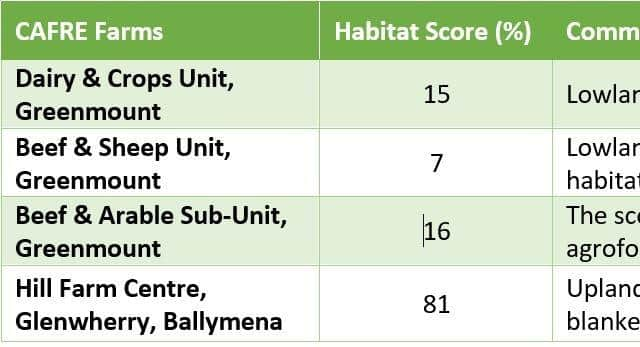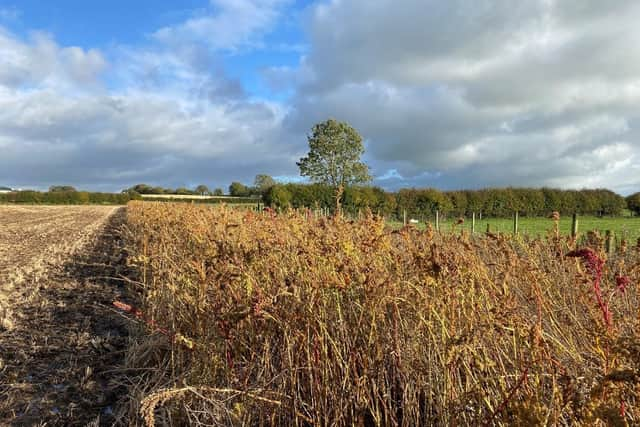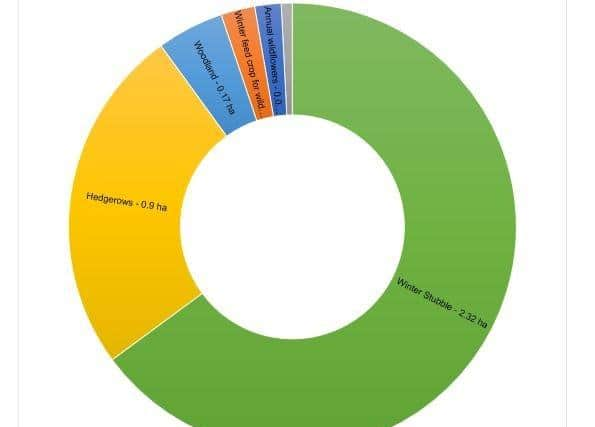CAFRE BIO-tool to measure habitat on your farm
and live on Freeview channel 276
Every farm in Northern Ireland (NI) has some level of semi-natural habitat, whether that is a hedgerow, a stone wall, an area of woodland, a farm pond, or a bog, however, it is both the habitat quantity and how the habitat is managed which will dictate the overall benefit of the farm to provide for biodiversity.
Nicola Warden, a Biodiversity Technologist at CAFRE, said: “We wanted to develop a simple tool which will allow farmers to firstly, calculate the percentage of semi-natural habitat that already exists on farm and secondly, to assess how the habitat is managed as a method of measuring the quality of the habitat.
Advertisement
Advertisement
“The tool can be downloaded from the CAFRE website and completed by any farmer or landowner by answering a series of questions relating to their farm. The tool is designed to cover a range of different farming types and enterprises.


“The tool will provide you with a habitat % and biodiversity assessment score based on your answers, and a list of suggestions on how the farm could be maintained or developed further for biodiversity.”
Nicola continued: “As an example, the tool has been completed on the CAFRE Farms, the percentage habitat scores are displayed in Table 1.
“The scores vary greatly between lowland, upland or hill farms, with the CAFRE Hill farm having a high percentage habitat score due to the large areas of blanket bog and semi-natural grassland that are found there and this score should not be compared with the lowland farms.”
Advertisement
Advertisement
Nicola explained: “At present the EU and some UK countries have a target for all farms to have 10% semi-natural habitat by 2030. From Table 1 we can see that the Dairy and Crops Unit, Beef and Arable Sub-Unit and the Hill Farm Centre are over this target.


“For these farms we aim to maintain the existing habitats in good condition to provide for biodiversity. Prior to 2020 the Beef and Arable Sub-Unit had a score of 4% based on hedgerows and a small wood, but through the addition of arable field margins, a field of agroforestry and the winter stubble from spring cropping, we have increased the score to 16%.
“The introduction of the arable margins has only removed 0.15ha from agricultural production. The agroforestry and winter stubble retention currently allows the land to be farmed as it would have been but also now provides for biodiversity and other ecosystem services such as carbon and soil, air and water quality.
“For the unit under the 10% target, we are actively considering options to increase the score and have set targets to increase the score over the coming years such as managing hedgerows to grow taller and wider to increase their overall area and biodiversity provision, establishing margin options for grassland, incorporating a farm pond into the landscape and establishing further areas of agroforestry, whilst maximising the biodiversity potential of the existing habitats.”
Advertisement
Advertisement
“Figure 1 is an example of the results the user will receive when they complete the assessment and gives a visual representation of what semi-natural habitats are found on the Beef and Arable Sub-Unit at CAFRE.”


Nicola concluded: “I encourage you to download the tool and complete it for your farm to see how you score. To download the tool, please visit the CAFRE website at: www.cafre.ac.uk/cafre-farm-biotool.
“We ask that when you complete the tool that you return it to the email address that can be found within the tool; this will help us to provide more feedback and create more accurate estimates.”